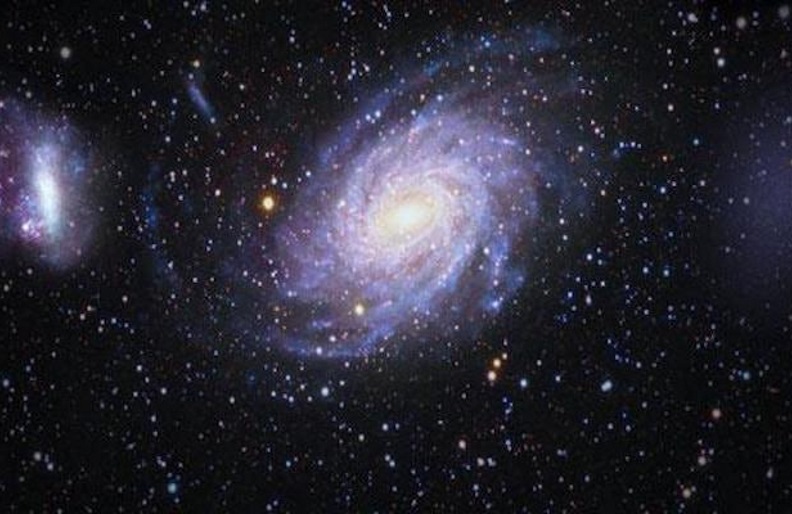Astronomers have spotted a mysterious “ghost” galaxy orbiting the Milky Way. Huge but extremely faint, the oddball galaxy has been named Antlia 2, and it might just be weird enough to force us to rethink what we know about galactic physics and dark matter.
Ant 2, as it’s also known, is an ancient dwarf galaxy that circles the Milky Way at a distance of at least 130,000 light-years. Although it’s as big as the Large Magellanic Cloud (LMC), the largest of our satellite galaxies, Ant 2 is about 10,000 times fainter.
“This is a ghost of a galaxy,” says Gabriel Torrealba, lead author of the study that discovered it. “Objects as diffuse as Ant 2 have simply not been seen before. Our discovery was only possible thanks to the quality of the Gaia data.”
The galaxy was found buried in data from the Gaia mission’s galactic census, which has mapped out almost 1.7 billion stars in the Milky Way and beyond. Since dwarf galaxies are among the oldest structures in the universe, they can usually be found by looking for similarly ancient stars.
The researchers on the new study, from Taiwan, the US, Australia, Germany and the UK, discovered the new dwarf galaxy by searching this cosmic map for RR Lyrae stars – old, metal-poor stars with regular pulses twice a day.
“RR Lyrae had been found in every known dwarf satellite, so when we found a group of them sitting above the Galactic disc, we weren’t totally surprised,” says Vasily Belokurov, co-author of the study. “But when we looked closer at their location on the sky it turned out we found something new, as no previously identified object came up in any of the databases we searched through.”
Ant 2 seems to have been missed in the past because it’s hiding behind the bulge of the Milky Way. The galaxy was confirmed by measuring the spectra of its stars. Its incredible dimness is matched by a much-lower mass than would be expected for a galaxy its size.
“The simplest explanation of why Ant 2 appears to have so little mass today is that it is being taken apart by the Galactic tides of the Milky Way,” says Sergey Koposov, co-author of the study. “What remains unexplained, however, is the object’s giant size. Normally, as galaxies lose mass to the Milky Way’s tides, they shrink, not grow.”
If this is the case, maybe Ant 2 is now just a fraction of its former size – but that just raises more questions about how it got so big in the first place. The team suggests that perhaps the galaxy ballooned outwards thanks to vigorous star formation, which created strong stellar winds and supernovae. Or maybe dark matter doesn’t clump together as much as is currently believed.
“Compared to the rest of the 60 or so Milky Way satellites, Ant 2 is an oddball,” says Matthew Walker, co-author of the study. “We are wondering whether this galaxy is just the tip of an iceberg, and the Milky Way is surrounded by a large population of nearly invisible dwarfs similar to this one.”
To find out, the team is now using the same method to look for similar faint galaxies in the Gaia data.
The research was published online.
Source: University of Cambridge


One comment